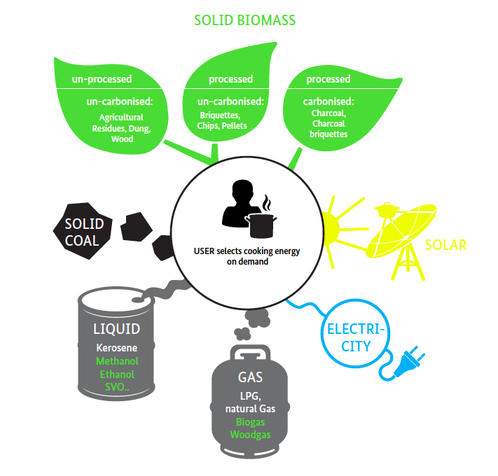Click here to register!
Difference between revisions of "Cooking Fuels"
***** (***** | *****) m |
***** (***** | *****) m |
||
| Line 73: | Line 73: | ||
*[[Cooking with the Sun|Cooking with the Sun]] | *[[Cooking with the Sun|Cooking with the Sun]] | ||
*[[BLEENS - Biogas, Liquefied Petroleum Gas, Electricity, Ethanol, Natural Gas, and Solar|BLEENS - Biogas, Liquefied Petroleum Gas, Electricity, Ethanol, Natural Gas, and Solar]] | *[[BLEENS - Biogas, Liquefied Petroleum Gas, Electricity, Ethanol, Natural Gas, and Solar|BLEENS - Biogas, Liquefied Petroleum Gas, Electricity, Ethanol, Natural Gas, and Solar]] | ||
| − | *[[ | + | *[[LPG for cooking|Cooking with Liquefied Petroleum Gas (LPG)]] |
| − | *[[LPG | + | *[[LPG cooking system|LPG Stoves]] |
*[[Cooking with Clean Fuels: Designing Solutions in Kakuma Refugee Camp|Cooking with Clean Fuels: Designing Solutions in Kakuma Refugee Camp]] | *[[Cooking with Clean Fuels: Designing Solutions in Kakuma Refugee Camp|Cooking with Clean Fuels: Designing Solutions in Kakuma Refugee Camp]] | ||
*[[Cooking Energy in Refugee Situations|Cooking Energy in Refugee Situations]] | *[[Cooking Energy in Refugee Situations|Cooking Energy in Refugee Situations]] | ||
| Line 96: | Line 96: | ||
{{#set: Hera category=Cooking Energy System}} | {{#set: Hera category=Cooking Energy System}} | ||
| + | [[Category:Fossil_Fuel]] | ||
| + | [[Category:Liquid_Petroleum_Gas_(LPG)]] | ||
| + | [[Category:Woodgas]] | ||
| + | [[Category:Biogas]] | ||
| + | [[Category:Liquid_Fuels]] | ||
| + | [[Category:Biomass]] | ||
| + | [[Category:Woodfuel]] | ||
| + | [[Category:Cooking_Fuels]] | ||
| + | [[Category:Cooking_Energy]] | ||
[[Category:Cooking_Energy_Compendium_(GIZ_HERA)]] | [[Category:Cooking_Energy_Compendium_(GIZ_HERA)]] | ||
| − | |||
| − | |||
| − | |||
| − | |||
| − | |||
| − | |||
| − | |||
| − | |||
| − | |||
Revision as of 11:43, 8 May 2020
Cooking Energy System | Basics | Policy Advice | Planning | Designing and Implementing ICS Supply | Designing and Implementing Woodfuel Supply | Climate Change | Extra
Introduction Fuel Theory
A household´s fuel choice is strongly influenced by the accessibility, affordability and convenience of the fuel, as well as dependent on the economic and technical options of a household and the respective social and cultural determination.[1] For example, in many households, cooking with woodfuels is so deeply rooted in culture that other fuels have little appeal, although they might provide recognizable health and economic benefits. The table shows the different aspects that influence the household´s fuel choice. These aspects have to be carefully investigated during the planning phase of a household energy project and constantly observed during the project implementation.
Cooking Fuel Categories
The next figure provides an overview of cooking fuels. Solid fuels are comprised of fossil fuels and solid biomass, such as coal. The solid biomass fuels can be differentiated into unprocessed fuels such as wood, agricultural residues and dung, with processed fuels further categorized into carbonized and un-carbonized fuels. Liquid fuels include kerosene, methanol, ethanol and plant oil, whilst renewable gaseous fuels consist of woodgas and biogas. The fossil gaseous fuels are comprised of petroleum gas (LPG) and natural gas.
Energy Shelf
Observations have shown that households prefer to use fuels such as LPG, to increase their cooking options. Thus users increase their options using several choices, using several fuels concurrently. The parallel use of several fuels is also referred to as ‘fuel stacking’ or “energy shelf”, which appears to be a common household fuel choice decision. In terms of energy security, fuel stacking offers households a coping strategy with market price fluctuations and unreliable supply, for example a likely phenomenon for LPG. Additionally, various fuels are often used for certain cooking purposes, such as frying, stirring or simmering, within a household. Following the argumentation of fuel stacking, the aspect of “modern” refers to the processing procedure and related technology that make a fuel “modern” from the perspective of energy efficiency, convenience, health benefits and environmental impacts. Therefore, the “energy ladder hypothesis”, which assumes a linkage between the household income level and fuel choice, is obsolete, as the differentiation between “modern” and “traditional”[2] fuels does not reflect the household’s fuel choice.
Further Information
- Global Alliance of Clean Cookstoves:“Clean Fuels and the Global Alliance”
- Cooking with Solid Fuels
- Cooking with Gas
- Cooking with Liquid Fuels
- Cooking with Biogas
- Cooking with Coal
- Cooking with Plant Oil
- Cooking with Ethanol and Methanol
- Cooking with Dung
- Cooking with Woodfuels (Firewood and Charcoal)
- Cooking with Firewood
- Cooking with Agricultural Residues
- Cooking with Woodgas
- Cooking with the Sun
- BLEENS - Biogas, Liquefied Petroleum Gas, Electricity, Ethanol, Natural Gas, and Solar
- Cooking with Liquefied Petroleum Gas (LPG)
- LPG Stoves
- Cooking with Clean Fuels: Designing Solutions in Kakuma Refugee Camp
- Cooking Energy in Refugee Situations
- Cooking Energy in Refugee Camps - Challenges and Opportunities
- Using Liquid Petroleum Gas in Mozambique Households
- Cooking with Kerosene
- From the 'Energy Ladder' to 'Fuel Stacking'
References
This article was originally published by GIZ HERA. It is basically based on experiences, lessons learned and information gathered by GIZ cook stove projects. You can find more information about the authors and experts of the original “Cooking Energy Compendium” in the Imprint - GIZ HERA Cooking Energy Compendium.
- ↑ Sepp, S. (2014): Multiple-Household Fuel Use – a balanced choice between firewood, charcoal and LPG






















